Short-eared Owls often hunt from perches instead of on the wing and it’s a technique that must be learned.
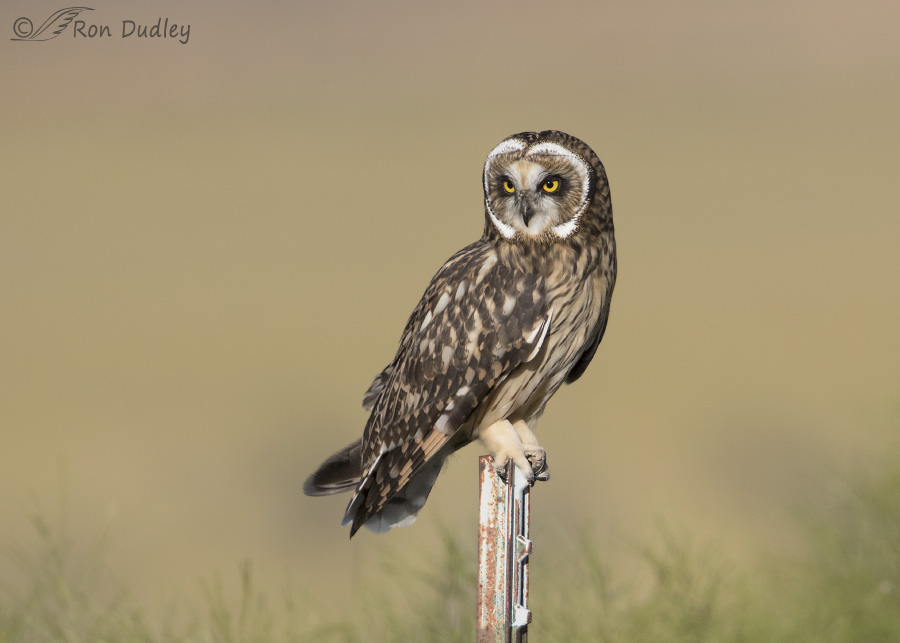
1/2500, f/7.1, ISO 500, Canon 7D Mark II, Canon EF 500mm f/4L IS II USM + 1.4 tc, not baited, set up or called in
I spent considerable time with this youngster six days ago in northern Utah as it was learning how to locate prey (probably voles) near its fence post perch.
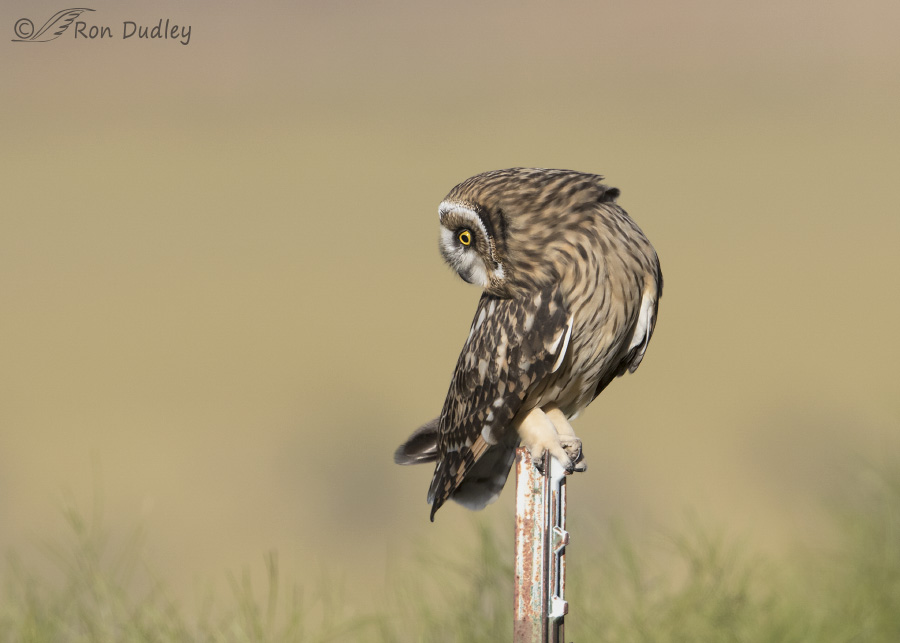
1/2500, f/7.1, ISO 500, Canon 7D Mark II, Canon EF 500mm f/4L IS II USM + 1.4 tc, not baited, set up or called in
This species uses both visual and acoustic cues to locate prey but they typically rely primarily on sound and this bird was doing a lot of head bobbing and parallaxing as it attempted to determine the source of sounds it would occasionally hear in the nearby vegetation.
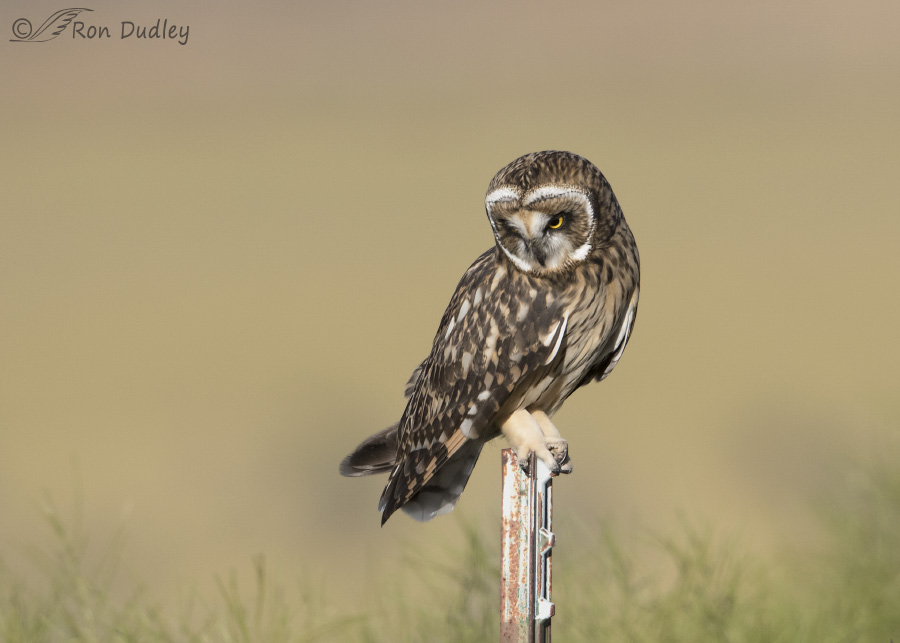
1/2500, f/7.1, ISO 500, Canon 7D Mark II, Canon EF 500mm f/4L IS II USM + 1.4 tc, not baited, set up or called in
Its concentration was pretty intense and it would often…
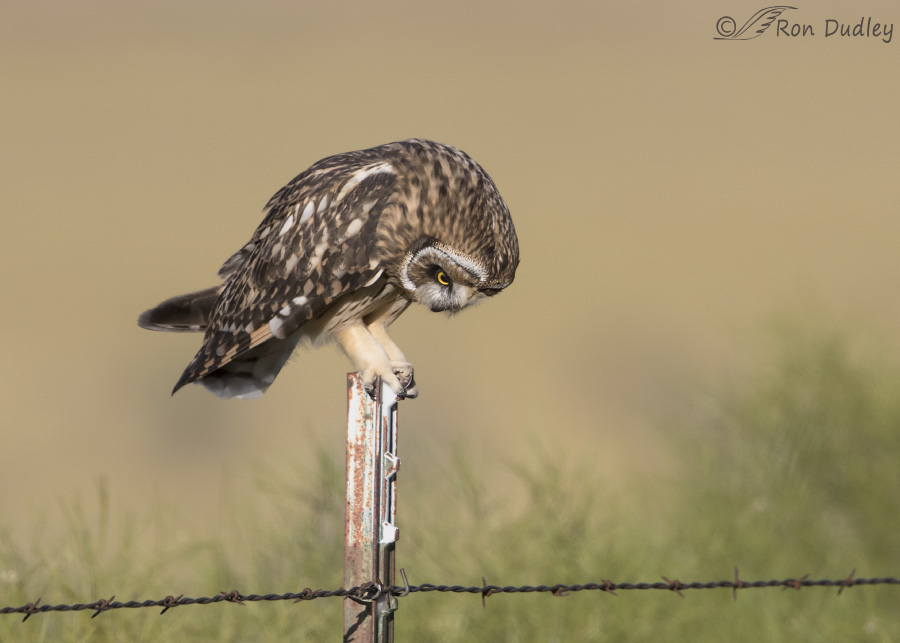
1/3200, f/7.1, ISO 500, Canon 7D Mark II, Canon EF 500mm f/4L IS II USM + 1.4 tc, not baited, set up or called in
stare at a particular spot for some time.
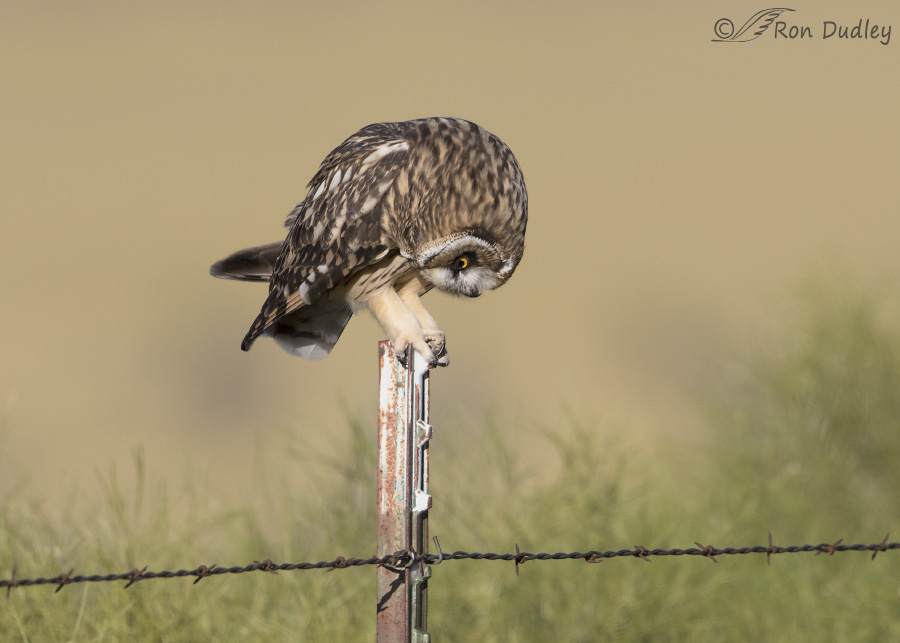
1/2500, f/7.1, ISO 500, Canon 7D Mark II, Canon EF 500mm f/4L IS II USM + 1.4 tc, not baited, set up or called in
When it did the owl would often twist and rotate its head – a technique that allows its asymmetrical ears to hone in on the source of the sound it was hearing.
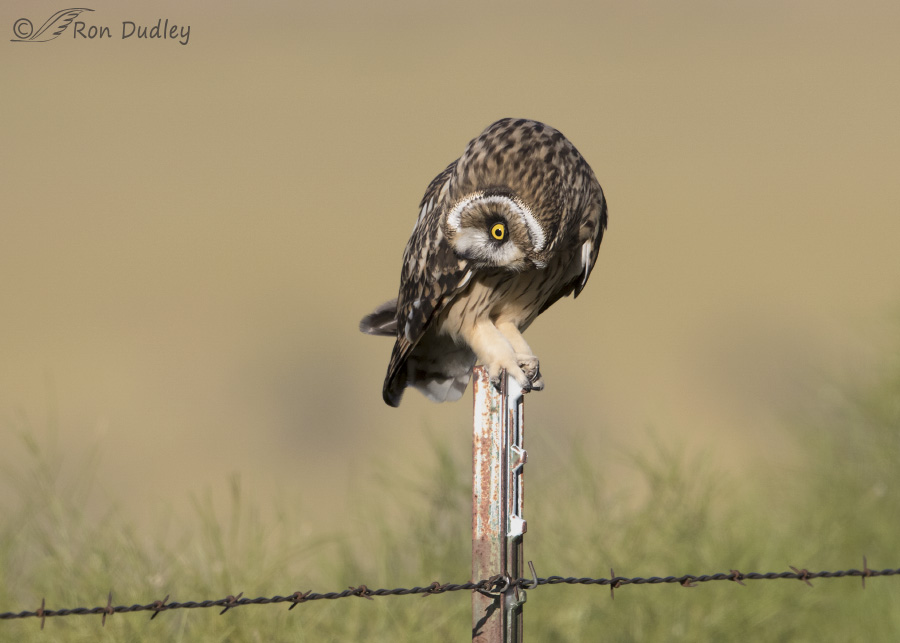
1/3200, f/7.1, ISO 500, Canon 7D Mark II, Canon EF 500mm f/4L IS II USM + 1.4 tc, not baited, set up or called in
At times this behavior gave me some interesting poses.
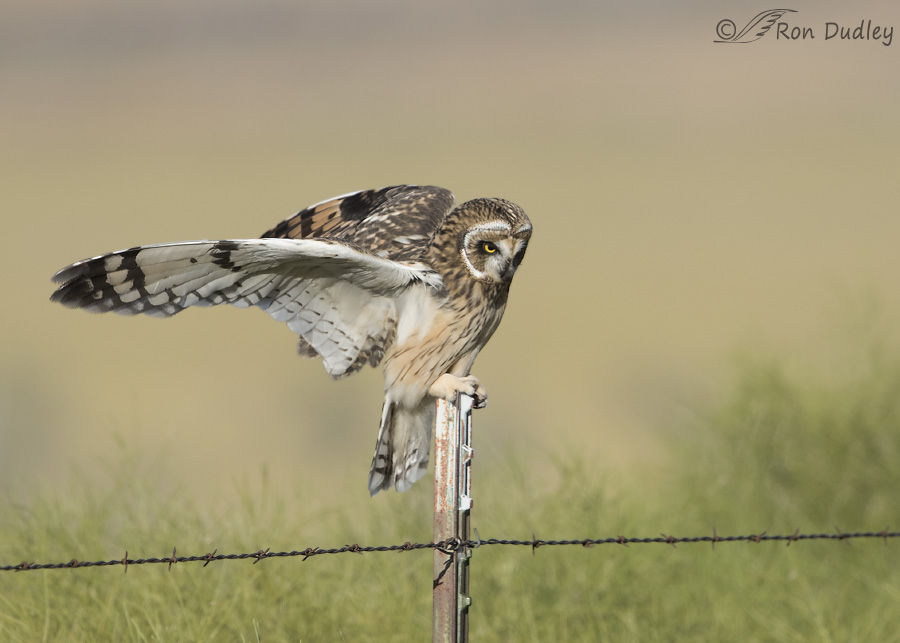
1/2500, f/7.1, ISO 500, Canon 7D Mark II, Canon EF 500mm f/4L IS II USM + 1.4 tc, not baited, set up or called in
At one point its head gyrations apparently caused the bird to lose its balance on the post but it quickly recovered and continued to hunt.
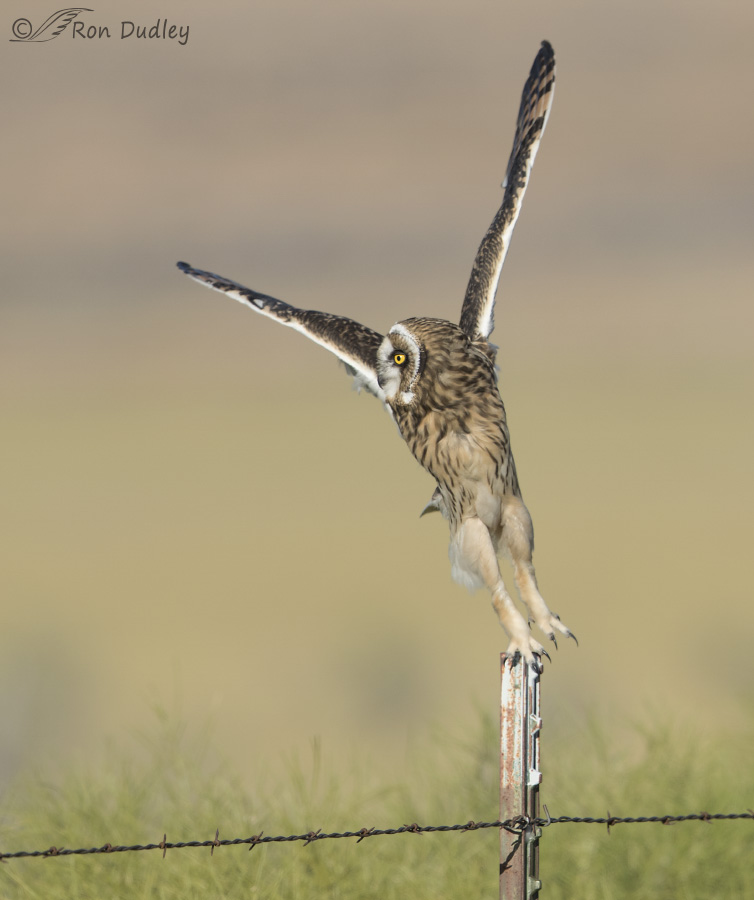
1/2500, f/7.1, ISO 500, Canon 7D Mark II, Canon EF 500mm f/4L IS II USM + 1.4 tc, not baited, set up or called in
But the owl never did go after prey from this perch (possibly because it could never see the sources of the sounds it heard in the tall vegetation) and eventually it flew off to another fence post to practice some more.
I’m pretty sure this very young bird was still being fed by its parents (at least occasionally) so at this point it probably didn’t need to rely on its own hunting skills for food. There was an adult male hunting in the area and whenever he would come in fairly close this juvenile would beg for food by calling out to him.
Many buteos also hunt from elevated perches (Red-tailed Hawks for example) but I’ve noticed a significant difference in their technique as compared to Short-eared Owls. The buteos typically prefer to hunt from high perches like power poles, tall trees and cliffs while these owls usually perch-hunt from low perches, especially fence posts. I suspect that behavioral difference is because buteos rely primarily on visual cues to locate prey while these owls depend much more on sounds.
Close proximity to prey items is particularly important when you need to hear them in order to locate them.
Ron


I really enjoyed all these pics AND the
very interesting facts. You never disappoint us!
Thank you, Linda. I’m glad you enjoyed both.
Much as I love their hunters, if I was a vole I would rarely show myself too. And I would work very hard on perfecting my scurry. She who scurries and runs away, lives to scurry another day…
There aren’t many critters that are better scurriers than voles, EC – perhaps that’s why we have so many of them. Just out of curiosity, do you have voles in Australia? Or perhaps their Marsupial equivalent?
We have field mice, which I suspect are similar. I don’t think there is a marsupial equivalent – but have been wrong before.
Absolutely beautiful. I have been around short eared owls in a rehab situation and I thought they were beautiful, but you photos are making them one of my favorite birds.
April, I can imagine the contrast between healthy SEO’s in the wild and sick or injured ones in rehab. I admire and appreciate the work that folks like you do.
Just spectacular, as usual (insert stream of superlatives here)! It’s such a joy watching the young ones figure out the aspects of this life thing. There’s a lot of trial and error, but they learn rapidly–especially compared to humans.
And while redtails generally prefer the highest-available perch from which to command the greatest amount of territory, the young ones typically stay closer to the ground, even hunting bugs in the immediate weeks after fledging while waiting for their parents to provide. While flight and hunting are hard-wired things, learning the finer points on how to control all the parts, pieces and finesse of hunting moving critters takes a while to perfect. And don’t forget that voles rarely show themselves. They’re generally scurrying underneath the grasses, remaining hidden from sight.
“don’t forget that voles rarely show themselves”
Boy, that’s for sure, Laura. I’ve seen them many times over the years but I only get very quick glimpses. I’ve been trying to get a decent shot of one for about nine years now but they always scurry away before I can focus on them.
LOL Ron…now imagine what it’s like to try to catch one! It takes a lot of skill! All that scurrying about and all
This is an amazing series. I admire the Owl’s ability to keep its balance as well as it did – I’d have fallen off that fence post at the first head turn…
I probably would have too, Susan. It’s a good thing they have wings for balance, especially at this age.
What a wonderful series! It almost feels Ike being there. I love the intensity of focus. These are so crisp and the detail is so sharp!!!
I’m glad you noticed the sharpness, Patty. 7 of the 8 images are very sharp although the 7th shot (the one where the bird lost its balance) is slightly soft. When it lost its balance it surprised me and I think I jerked my lens a little. “Stuff” happens…
Shortie yoga! Once again, many thanks for such a beautiful series to start my day!
You’re very welcome, Diane.
These are great shots Ron.
I would have been chuckling so hard over the owls head gyrations and losing its balance, I wouldn’t have been able to hold the camera on the Owl.
Wonderful images! Thanks for sharing.
Dick, I’ve seen them parallaxing so often lately that I no longer break out laughing when they do it but it still amuses me immensely.
On this same morning I saw a juvenile (possibly this same bird) rotate its head to a slightly more extreme angle than I’ve ever seen before. That one DID make me laugh out loud.
How can anyone not love owls? These birds have soon much personality.
That you are able to find, and photograph so many raptors, and owls just
amazes me. Thanks for my morning smile… ;-)))
“Thanks for my morning smile”
I’m happy to provide it, Roger. Thank you.